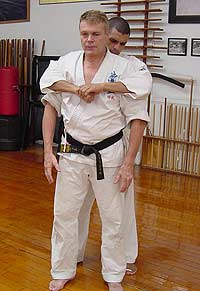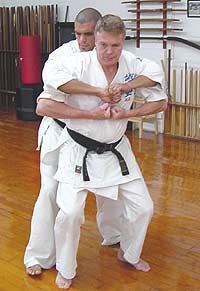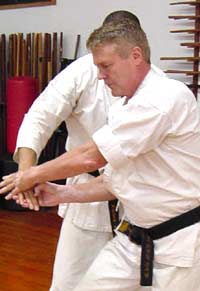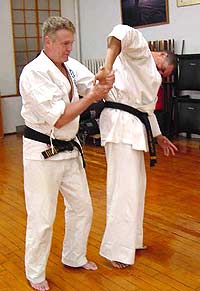It works well in the ring because it is illegal to attack (and especially illegal to break/severe) the neck and upper spine. Aside from laws, there are also referees, judges and the audience (re: witnesses!) who would greatly disuade your attacker from pulling an illegal move like that. In a street fight, you don't have these conditions.
Although the law does restrict what we can do in a fight - mainly in regard to using equal or lesser force - you cannot automatically assume that your opponent is going to be totally law-abiding. I mean, in a self-defence situation, if the other person started the fight, they've already broken the law by assaulting you, so it's not as if they've established a good reputation with you for being a nice law-abiding citizen!It's for this same reason that I've often been critical against people who expose their genitals in a fight. Works fine in the ring where attacking the genitals is disallowed, but not in a real fight.
In other words, assuming that your opponent is inferior. That's a dangerous assumption to make in a fight. In a fight you should always assume that your opponent is superior to you. They may not be, but you ought to assume that they are stronger, faster and better skilled than you are. And that's another gripe I have with a lot of martial arts schools/instructors. :/Originally Posted by sifun
The one thing to keep in mind in a real fight is Murphy's Law: anything that can go wrong will. Always have a Plan B in case Plan A screws up and a Plan C in case Plan B screws up too and so on and so on - it becomes a connective cyclical flow that changes according to how the situation changes. This is visually represented in the Yin Yang and Ba Gua hexagrams (King Wen)which actually forms a 64-bit algorithm as it's all based on a series of sequential logic gates.
The Ba Gua Hexagrams: 8 across x 8 down = 64b (bits) = 8B (bytes)
It is also the nature of the Art of War. You must be able to constantly adapt and change to outmaneouvre your opponent. You don't need martial arts training to fight an inferior foe... the real art of war is defeating someone who's better than you are!








 Reply With Quote
Reply With Quote









